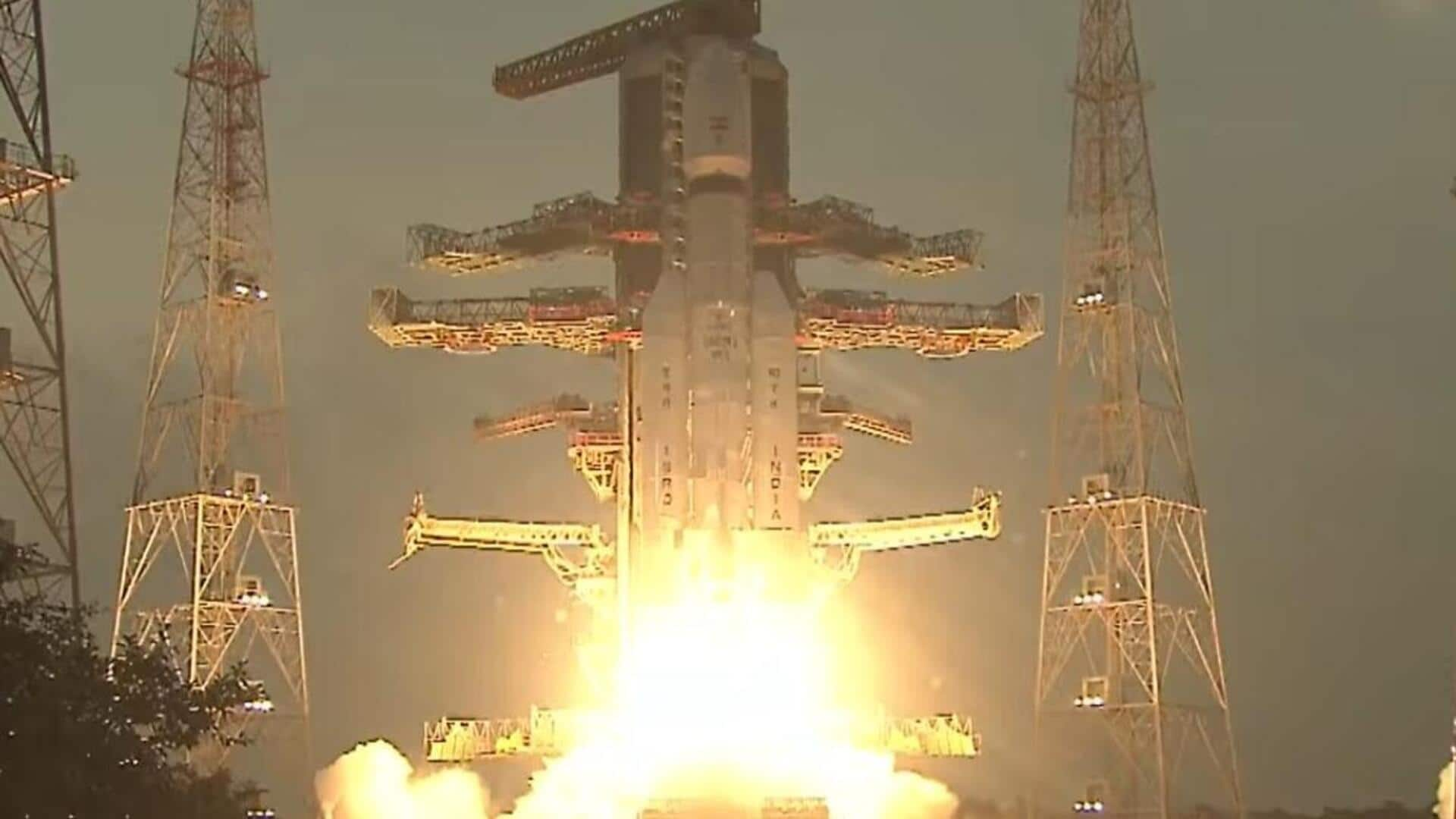
ISRO launches India's heaviest communications satellite to boost defense systems
What's the story
The Indian Space Research Organization (ISRO) has successfully launched its heaviest military communications satellite, CMS-03 or GSAT-7R. The launch took place from Sriharikota at 5:26pm IST, marking a major milestone in India's defense capabilities and space technology. The CMS-03 satellite weighs around 4,410kg and is the heaviest to be launched from Indian soil. It will operate in a geostationary orbit to support defense networks with secure multi-band communications for Indian forces.
Rocket details
Satellite was launched using LVM3-M5 rocket
The CMS-03 satellite was launched using the powerful LVM3-M5 rocket, India's most advanced launcher. The 43.5-meter-tall LVM3 is a heavy-lift rocket capable of carrying large payloads into space. It has two solid boosters, a liquid core, and a cryogenic upper stage. This mission highlights India's growing capabilities in both civilian and defense space technology as ISRO plans more launches under its communication satellite program to expand bandwidth and extend secure coverage for Indian forces.
Satellite capabilities
It will provide secure multi-band communications for Indian forces
The CMS-03 satellite will provide secure multi-band communications for Indian forces, covering land, sea, and air units through encrypted channels. This system greatly enhances strategic coordination and maritime surveillance capabilities. The successful launch of this satellite is a major step toward advanced indigenous defense technology in space. It also strengthens India's autonomy in satellite launches, as previously heavier satellites were contracted out to private space agencies from other countries for launch.
Future launches
ISRO working on ways to increase LVM3's carrying capacity
ISRO is already working on ways to increase the carrying capacity of the LVM3 rocket, especially since it will be used for India's human spaceflight mission. One of the changes being considered is increasing the thrust produced by the third or cryogenic upper stage of this launch vehicle. The agency also plans to use a semi-cryogenic engine instead of a liquid-propellant-based second stage, which could make it cheaper and more efficient.
Twitter Post
Take a look at the official confirmation from ISRO
Liftoff! #LVM3M5 launches #CMS03 from SDSC SHAR, carrying India’s heaviest communication satellite to GTO.
— ISRO (@isro) November 2, 2025
Youtube URL:https://t.co/gFKB0A1GJE
For more Information Visithttps://t.co/yfpU5OTEc5